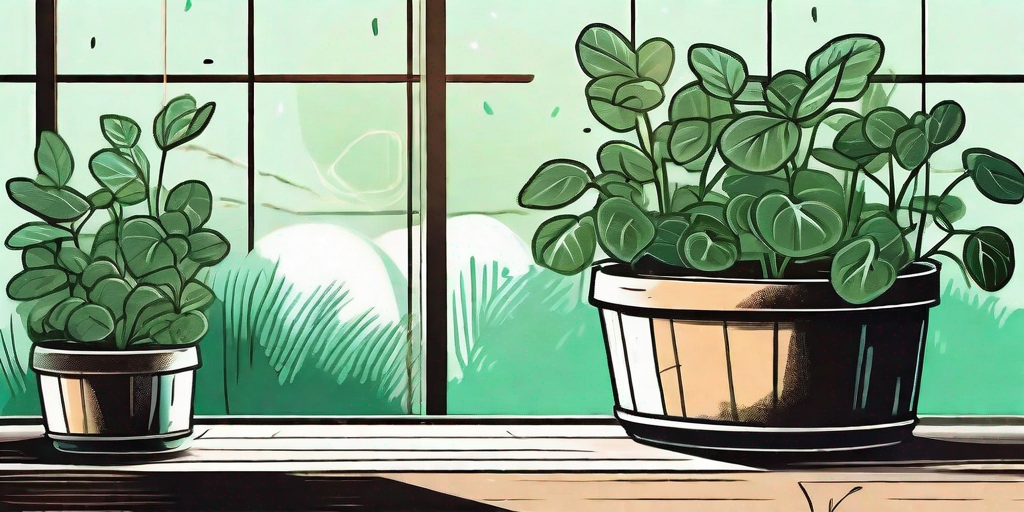
Welcome to the world of spud cultivation, where the humble potato is king and your kitchen becomes a kingdom of delicious, home-grown tubers. If you've ever dreamed of harvesting your own potatoes but lack the sprawling acres of a traditional farm, fear not! Container gardening is here to save the day and your dinner plate.
The Allure of the Almighty Spud
Why, you might ask, should you dedicate your time and effort to growing potatoes? Well, aside from their undeniable charm and good looks (who doesn't love a spud?), potatoes are incredibly versatile. From chips to mash, roast to boiled, the humble potato has got you covered.
Moreover, potatoes are a great source of vitamin C, potassium, and fiber, making them a healthy addition to any meal. And let's not forget the sheer satisfaction of harvesting your own produce. There's nothing quite like the thrill of unearthing your very own home-grown potatoes.
Choosing Your Container
Before you can embark on your potato-growing journey, you'll need to select the perfect container. This is where your potatoes will live, grow, and hopefully thrive, so choose wisely.
While you can purchase specially designed potato planters, you can also use any large container with adequate drainage. Old compost bags, buckets, or even a dustbin can work. The key is to ensure there's enough room for your potatoes to grow and that excess water can easily drain away.
Size Matters
When it comes to container size, bigger is generally better. A larger container will allow for more soil, which in turn allows for more room for your potatoes to grow. Aim for a container that's at least 30cm deep and 40cm in diameter.
However, if you're working with a smaller space or just want to start small, you can still grow potatoes in smaller containers. Just keep in mind that your yield may be smaller as well.
Preparing Your Potatoes
Once you've chosen your container, it's time to prepare your potatoes. This process, known as 'chitting', involves encouraging your potatoes to sprout before planting them.
Place your seed potatoes in a cool, light place (but not in direct sunlight) and wait for the magic to happen. After a few weeks, your potatoes should have sprouted small shoots, ready to be planted.
The Right Spud for You
Not all potatoes are created equal, and the type of potato you choose can have a big impact on your harvest. There are two main types of potatoes: early and maincrop.
Early potatoes are quicker to mature and are perfect for salads and boiling. Maincrop potatoes take longer to grow but are great for baking and roasting. Choose the type that best suits your culinary needs and patience level.
Planting Your Potatoes
Now that your potatoes are chitted and ready to go, it's time to plant them. Fill your container with about 10cm of compost or well-rotted manure, place your potatoes on top (sprouts facing upwards), and cover with another 10cm of compost.
As your potatoes grow and more foliage appears, keep adding compost until your container is full. This process, known as 'earthing up', helps to prevent the potatoes from turning green and becoming inedible.
Caring for Your Spuds
With your potatoes happily planted, it's time to turn your attention to their care. Potatoes are fairly low maintenance, but they do require regular watering, especially during dry periods.
Keep an eye out for pests and diseases. Common potato problems include blight, a fungal disease that can devastate your crop, and slugs, which enjoy munching on your precious spuds. If you spot any problems, act quickly to prevent them from spreading.
Harvesting Your Potatoes
The moment you've been waiting for: harvest time! The exact timing will depend on the type of potato you've planted, but generally, you can start harvesting once the foliage has died back.
Gently dig around in the compost to find your potatoes. Remember, they can be quite delicate, so handle with care to avoid damaging them. Once harvested, let your potatoes dry out before storing them in a cool, dark place.
FAQs
Can I grow potatoes from supermarket potatoes?
While it's possible to grow potatoes from supermarket potatoes, it's not recommended. Supermarket potatoes are often treated to prevent sprouting, which can hinder their growth. It's best to use seed potatoes from a reputable garden center or online supplier.
How many potatoes will I get from each plant?
The number of potatoes you'll get from each plant can vary greatly, depending on the type of potato, the size of your container, and how well you care for your plants. However, you can generally expect to get about 10-15 potatoes per plant.
Can I grow potatoes indoors?
Yes, you can grow potatoes indoors, as long as they get enough light. A sunny windowsill or conservatory is ideal. Just remember to keep them well watered and watch out for pests.
In Conclusion
So there you have it, the ins and outs of growing your own spuds in containers. It's a fun, rewarding, and surprisingly easy way to grow your own food. Plus, it's a great way to impress your friends and family with your green thumb and culinary prowess. So why not give it a go? Your dinner plate will thank you.











